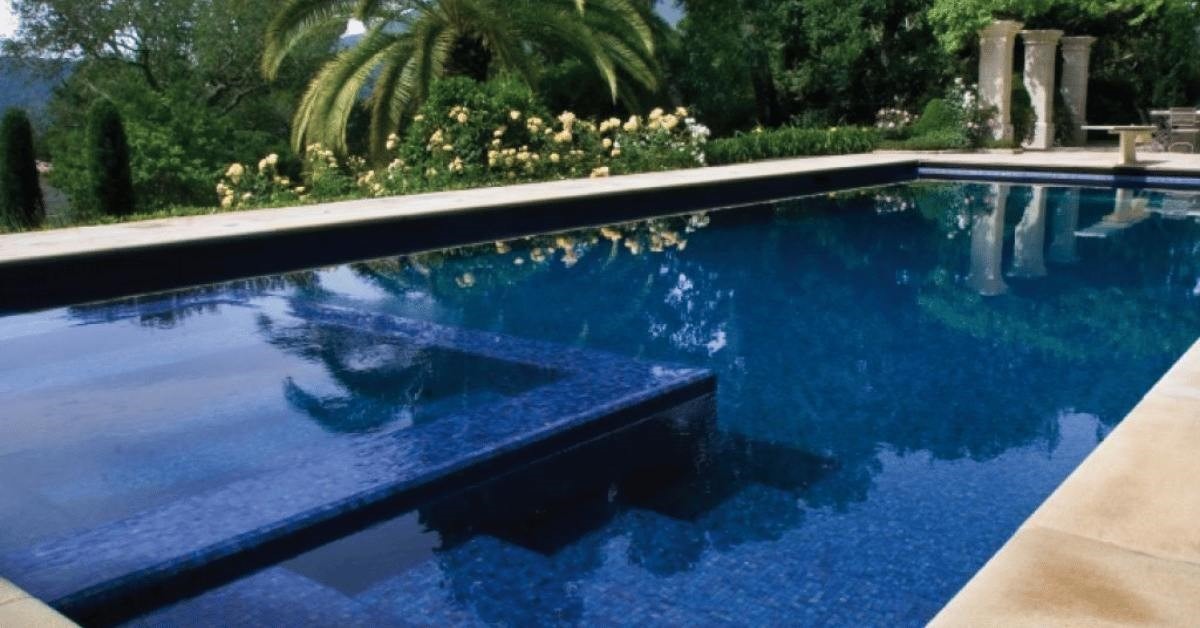
Are you tired of your pool’s worn-out appearance? Is the rough surface underfoot ruining your swimming experience? Pool plaster refinishing might be just the solution you need. This process not only revives the look of your pool but also enhances its durability, ensuring it remains a relaxing oasis for years to come. Let’s dive in and explore everything you need to know about pool plaster refinishing.
What is Pool Plaster Refinishing?
Pool plaster refinishing is the process of applying a new layer of plaster to the surface of a swimming pool. This new layer covers up any wear and tear, giving the pool a fresh, smooth finish. Imagine it like giving your pool a facelift, but instead of skin, you’re dealing with the durable surface that keeps your pool watertight.
Why Does Your Pool Need Refinishing?
Pools, like anything else, don’t last forever without a bit of TLC. Over time, the plaster in your pool can become rough, stained, and even start to chip away. Refinishing not only restores the aesthetic appeal but also ensures the pool remains safe and enjoyable to use. After all, who wants to swim in a pool that feels like sandpaper?
Signs It’s Time to Refinish Your Pool
How do you know when it’s time to refinish your pool? Here are some telltale signs:
-
Rough Texture: If the plaster feels rough to the touch, it’s time to consider refinishing.
-
Stains and Discoloration: Persistent stains that don’t come off with regular cleaning indicate that the plaster has worn thin.
-
Cracks and Chips: Visible cracks and chipping are clear signs that the plaster is past its prime.
-
Increased Maintenance: If you find yourself spending more time maintaining the pool than enjoying it, refinishing might be overdue.
The Pool Plaster Refinishing Process
Refinishing a pool is a multi-step process that requires precision and expertise. Here’s a simplified breakdown:
-
Drain the Pool: The first step is to completely drain the pool.
-
Prepare the Surface: This involves chipping away the old plaster, cleaning the surface, and sometimes applying a bond coat.
-
Apply New Plaster: The new plaster is then applied, typically in one or two coats, depending on the material.
-
Smooth and Cure: The plaster is smoothed out, and then it needs to cure, which can take several days.
-
Refill the Pool: Once the plaster has cured, the pool is refilled, and it’s ready for use.
Choosing the Right Plaster for Your Pool
Not all pool plasters are created equal. The most common types include:
-
Standard White Plaster: A classic choice, known for its smooth finish and affordability.
-
Quartz Aggregate: This option is more durable than standard plaster and offers a range of color choices.
-
Pebble Finish: A luxurious option that provides a textured finish and comes in various natural colors.
-
Polished Aggregate: Offers a smooth and shiny finish with a variety of color options.
Each type of plaster has its pros and cons, so it’s important to choose the one that best suits your needs and budget.
How Long Does Pool Plaster Last?
Typically, a well-maintained pool plaster can last between 7 to 15 years. Factors like water chemistry, usage, and weather conditions can influence this lifespan. Regular maintenance can help extend the life of your pool’s plaster, keeping it looking and feeling new for longer.
Cost of Pool Plaster Refinishing
The cost of pool plaster refinishing can vary depending on the size of your pool, the type of plaster you choose, and the labor involved. On average, you might spend anywhere from $4,000 to $10,000. While it might seem like a hefty investment, consider it as preserving the longevity and beauty of your pool, much like regular home maintenance.
DIY vs. Hiring a Professional
Refinishing your pool might seem like a fun DIY project, but it’s a job best left to professionals. The process is labor-intensive and requires specific skills to ensure the plaster is applied correctly. Hiring a professional ensures the job is done right, saving you time, money, and potential headaches down the road.
Maintaining Your Newly Refinished Pool
Once your pool has been refinished, maintaining it is key to ensuring its longevity. Regularly check the water’s pH levels, keep the pool clean, and avoid using harsh chemicals. Think of it like taking care of a new car—you wouldn’t want to let it get dirty or neglect regular maintenance!
Common Mistakes to Avoid
When it comes to pool plaster refinishing, some common mistakes can be costly:
-
Ignoring Surface Preparation: Skipping or rushing the preparation phase can lead to poor plaster adhesion.
-
Using Incorrect Water Chemistry: Filling the pool with water that has imbalanced chemicals can damage the new plaster.
-
Neglecting Curing Time: It’s crucial to let the plaster cure properly before refilling the pool.
Avoiding these mistakes will help ensure that your pool refinishing project is successful and long-lasting.
Benefits of Regular Pool Maintenance
Regular maintenance goes hand-in-hand with refinishing. It helps in:
-
Preventing Damage: Regular checks and cleaning prevent small issues from turning into major problems.
-
Extending Lifespan: A well-maintained pool lasts longer, saving you money in the long run.
-
Enhancing Aesthetics: Keeping your pool clean and balanced ensures it always looks inviting.
How Refinishing Affects Pool Safety?
Safety is paramount when it comes to pools. Rough surfaces can lead to scrapes and injuries, while cracks can cause leaks. Refinishing your pool ensures that these hazards are eliminated. Making your pool finish a safe place for family and friends to enjoy.
Conclusion
Pool plaster refinishing is more than just a cosmetic upgrade it’s an essential part of maintaining a safe and enjoyable swimming environment. By understanding the process and making informed decisions, you can keep your pool looking great and ready for fun for many years to come.